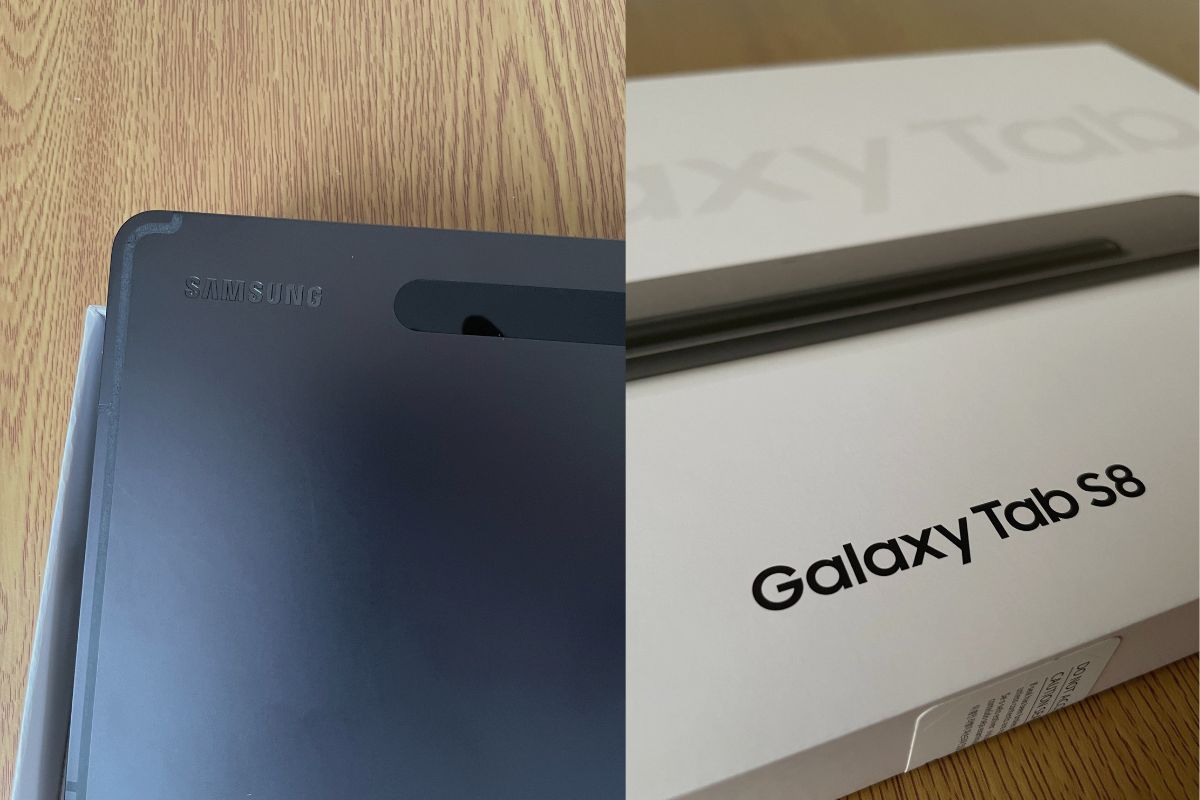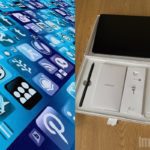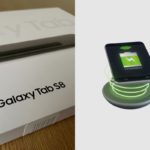The connectivity and network capabilities of the Samsung Galaxy Tab S8 are very important parts of the tablet. They allow us to communicate with our friends via a connection to the internet, whether that is through Wi-Fi 6E or a network connection via a sim in the tablet. You can also use a Bluetooth connection to communicate with other devices from your tablet.
With Bluetooth, you can send and receive files and also play music via a speaker or a pair of earbuds, which provide a very intuitive experience. The Galaxy Buds 2 is a good example of a device that connects wirelessly with the Samsung Galaxy Tab S8 through a Bluetooth connection. However, not all Samsung Galaxy Tab S8 tablets come with the same network connectivity options. So, I’ll be discussing the connectivity and network connectivity options available to the Samsung Galaxy Tab S8.
- Connectivity and Network Specs of the Samsung Galaxy Tab S8 tablet
- Wi-Fi and Bluetooth – Samsung Galaxy Tab S8 Tablet
- Wi-FI 6E
- Bluetooth 5.2
- GPS and Navigation – Samsung Galaxy Tab S8 Tablet
- Cellular Connectivity – Samsung Galaxy Tab S8 Tablet
- Network Speeds
- NFC and Payments – Samsung Galaxy Tab S8 Tablet
- What can I use NFC for?
- USB and Other Ports
- Conclusion
- Useful Links:
Related posts to read: Samsung Galaxy Tab S8 Review.
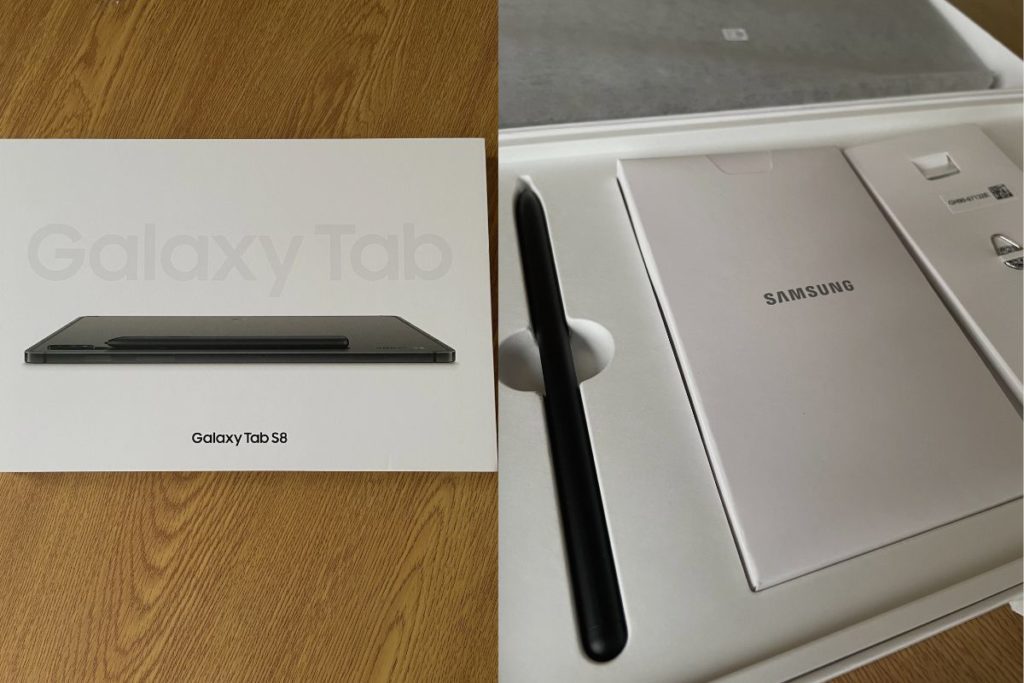
Connectivity and Network Specs of the Samsung Galaxy Tab S8 tablet
| Connectivity | WLAN | Wi-Fi 802.11 a/b/g/n/ac/6e, dual-band, Wi-Fi Direct |
| Bluetooth | 5.2, A2DP, LE | |
| Positioning | GPS, GLONASS, BDS, GALILEO | |
| NFC | No | |
| Radio | No | |
| USB | USB Type-C 3.2, magnetic connector |
Wi-Fi and Bluetooth – Samsung Galaxy Tab S8 Tablet
The Wi-Fi 6E technology used by Samsung’s Galaxy Tab S8 is the same as that used by the more expensive Galaxy Tab S8+ and Galaxy Tab S8 Ultra, making it the only tablet currently using this capability. It was able to achieve extraordinarily fast transfer speeds during testing, with a peak of 1802 Mbps, while using a Wi-Fi 6E router such as the Asus ROG Rapture GT-AXE11000.
The Wi-Fi 6 network kept running smoothly and delivered consistent data transfer rates of more than 800 Mbit/s which provided optimal network quality. The Samsung Galaxy Tab S8 should have a little issue receiving signals thanks to its 13 5G bands, five 3G bands, and 19 4G bands in its 5G configuration, which provides an optimal network connection. The tablet does support Bluetooth 5.2, which enables you to connect to multiple compatible devices but NFC is not supported.
Wi-FI 6E
In essence, Wi-Fi 6E is Wi-Fi 6 (sometimes referred to as 802.11ax or AX Wi-Fi) that utilises the 6GHz spectrum rather than the more traditional 2.4GHz and 5GHz bands. It is merely a broadening of the current norm. This means that it gains from innovations like transmit beamforming, OFDMA, and MU-MIMO congestion reduction to increase efficiency, as well as out-of-the-box support for WPA3 security. Yet, the inclusion of more bandwidth and channel options is 6E’s key advantage.
Wi-Fi 6E’s use of the 6GHz radio spectrum for Wi-Fi frees up 1,200 MHz of additional bandwidth, which is beneficial in densely populated areas like public spaces. This bandwidth is divided into seven 160 MHz channels at once or fourteen 80 MHz channels. 6E channels exist without overlap or interference, in contrast to current Wi-Fi channels, which are currently crammed into just 400 MHz of spectrum. This ought to increase stability and provide you with near-zero latency.

Bluetooth 5.2
The Bluetooth 5.2 on the Samsung Galaxy Tab S8 features an enhanced attribute protocol (EATT), which is more effective and secure than ATT. This is a new feature of Bluetooth 5.2 and is an updated version of the original attribute protocol (ATT).
Isochronous channels (ISOC), a brand-new feature available in Bluetooth 5.2, support both connection-oriented and connectionless communication. The most recent audio technologies, LE Audio and LE Power Control are included in Bluetooth 5.2. Bluetooth 5.2 delivers quicker pairing capabilities and longer battery life thanks to these developments and efficiency enhancements.
GPS and Navigation – Samsung Galaxy Tab S8 Tablet
One of the compelling features of Samsung’s Galaxy Tab S8 is its ability to locate itself using satellite navigation systems like GPS (B1), Glonass (B1), Beidou (B1, B1C), Galileo (B1), and QZSS. During testing, the tablet was able to locate itself with an accuracy of 3 metres both indoors and outdoors, and localization worked swiftly in both situations.
In actual use, the tablet also offers precise navigational data thanks to the integrated GPS chip inside the tablet, which provides up-to-date location services on the tablet. You can also download maps from Google Maps when you are offline to allow you to get around town even when you don’t have any data. This enables you to have offline maps.
Cellular Connectivity – Samsung Galaxy Tab S8 Tablet
At launch, Samsung only offered Wi-Fi variants on its website, which they still do; however, in the beginning, AT&T and T-Mobile also provided cellular connectivity for the Tab S8, but now most of the major cellular network providers all offer the Galaxy Tab S8 with a mobile network connection. The Samsung Galaxy Tab S8 does not come with eSIM capabilities and is not expected to have them patched in with an update.
Network Speeds
Network speeds vary greatly depending on your network and service provider, but it was able to achieve extraordinarily fast transfer speeds during testing, with a peak of 1802 Mbps, while using a Wi-Fi 6E-capable router such as the Asus ROG Rapture GT-AXE11000. The Wi-Fi 6 network kept running smoothly and delivered consistent data transfer rates with a maximum speed of more than 800 Mbit/s. The Samsung Galaxy Tab S8 also has a dual-band network with minimal latency speed.
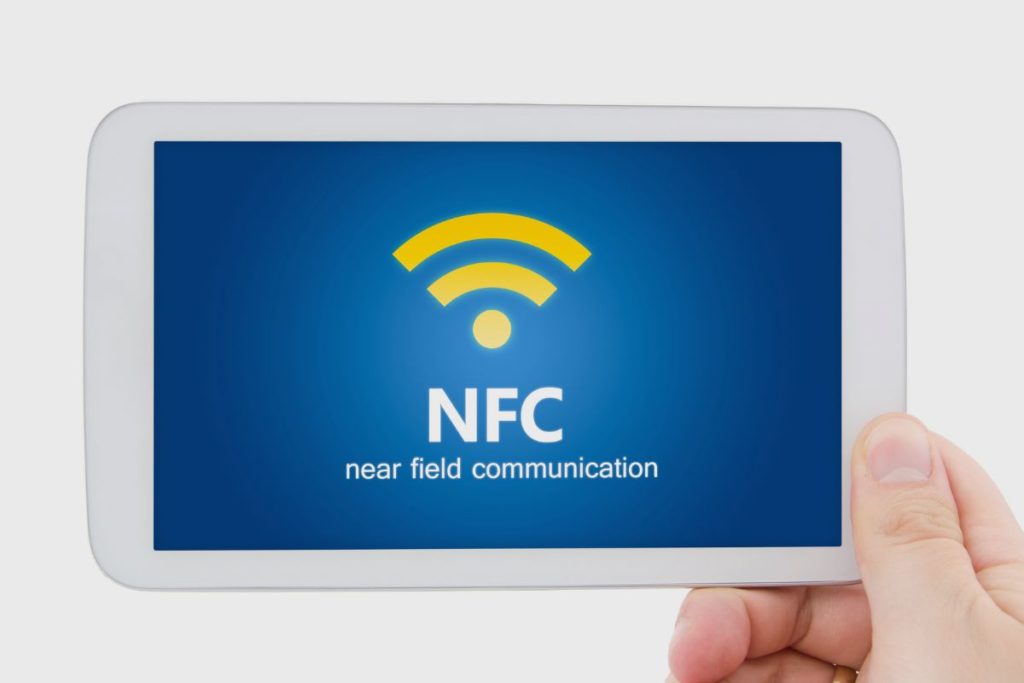
NFC and Payments – Samsung Galaxy Tab S8 Tablet
The Samsung Galaxy Tab S8 does not have near-field communication capabilities and, as such, cannot make payments with Samsung Pay. However, the Samsung Galaxy S23 has NFC within its network setup. Nowadays, NFC, sometimes referred to as “near-field communication,” is a feature on the majority of smartphones. You are already familiar with how NFC functions if you have ever used a mobile payment app like Samsung Pay or Google Pay.
To put it briefly, it is a proximity-based wireless communication standard. Yet the range of NFC contact is much shorter than that of Wi-Fi or Bluetooth. In addition to smartphones, NFC can occasionally be found on speakers, collectables, gaming consoles like the Nintendo Switch and 3DS, and even tablets. Although NFC’s short range makes it appear a little unimpressive on paper, it’s still a really useful function that many of us take for granted every day.
Near-field communication, sometimes known as NFC, is a short-range wireless technology that enables your phone to function as a payment card or transit pass, transfer data rapidly, and link with Bluetooth accessories like headphones and speakers right away.
What can I use NFC for?
The uptake of NFC has considerably increased recently. Following are some general applications for the technology:
- Data transfer: In 2011, Google debuted Android Beam with the release of the Android Ice Cream Sandwich. You may share any information or material that was on your screen with other NFC-capable devices using this capability. Touching the backs of the two devices was all that was required to accept the transfer prompt. Until recently, Android Beam was abandoned in favour of nearby, which makes use of Bluetooth and Wi-Fi Direct.
- Mobile payments: NFC chips in your smartphone are used by Samsung Pay, Google Pay, and Apple Pay for contactless transactions. Nowadays, the majority of debit and credit cards come equipped with an NFC tag. The aforementioned apps simply mimic these marks with approval from the financial institution or issuing bank, as appropriate. Once configured, all you have to do is approach the card reader with your smartphone or wearable device.
- Fast pairing: NFC’s ease is extended to non-screen devices. It is commonly used by wireless speakers and headphones to transmit pairing data to your smartphone. Several cameras use it as a quick way to connect to Wi-Fi Direct for simple photo and video transfers.
- Public transportation access: NFC-based cards are used as a type of access control mechanism for public transportation in numerous places, including Hong Kong, Singapore, and London. Some systems even let you use Google Pay and other payment apps instead of carrying along a card.
- Nintendo employs technology to link tangible toys with digital games. The only difference between an Amiibo and another action figure or trading card is that it also has an inbuilt NFC chip. One of them automatically provides you with extra characters, levels, or bonus stuff for a particular game when you place it next to a Nintendo Switch or 3DS.
- Home automation: A few smart home technologies, such as Apple’s HomeKit and Google’s Home Assistant, also enable NFC. You can set up off-the-shelf NFC tags to control appliances or automation using apps on both Android and iOS.
NFC is better suited to mobile devices because it allows for quick access to connectivity options available to other devices. The Samsung team didn’t see the need to install an NFC connection into the Samsung Galaxy Tab S8, as they didn’t see a lot of people taking out their large tablets to make quick payments or access public transit like buses and trains. The decision eventually came down as a matter of convenience.
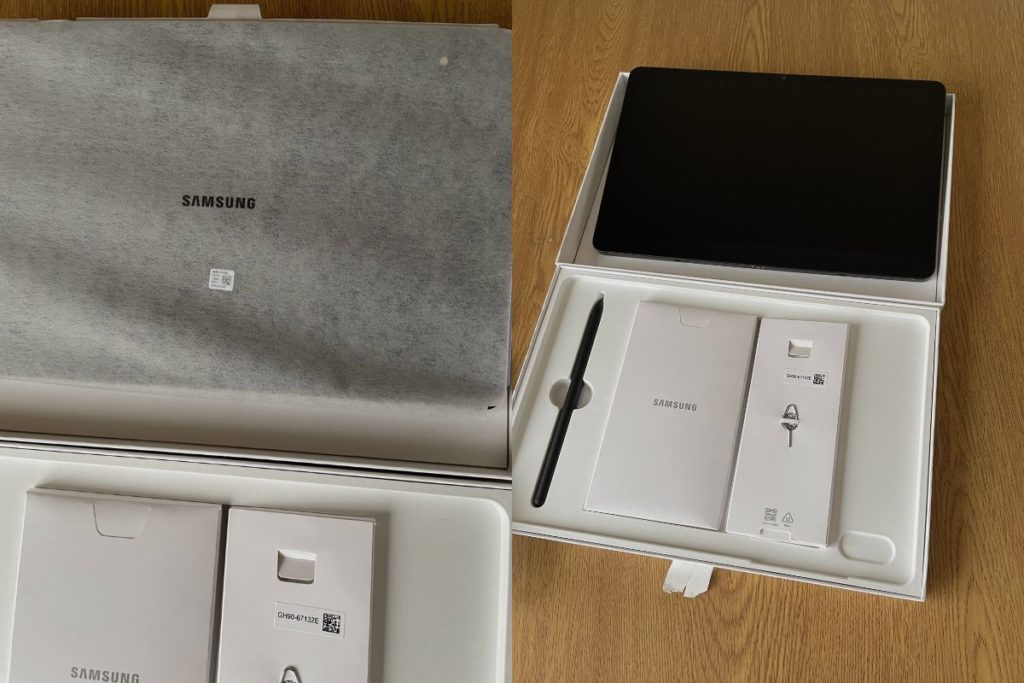
USB and Other Ports
The Samsung Galaxy Tab S8 comes with one USB-C port and a micro-SD card slot, which allows you to expand your storage up to 1 TB, which is a good thing to see given that the last 3 Samsung Galaxy S phones don’t have SD card slots.
However, there is no 3.5mm headphone jack in the tablet, so you will either have to use a USB-C cable adapter to plug your headphones in or you can use a Bluetooth connection, and this is where I would have to plug in an obligatory Samsung Galaxy Buds 2 joke, but at this point, you have heard them all. So, I’ll just give you a nice piece of advice: buy the tablets with the Galaxy Buds 2 bundled together; you’ll thank me later, and I promise you won’t regret it because it makes for one of the best mobile experiences.
You could always get an HDMI adapter if you don’t want to turn on your WI-FI and open the Dex Mode app. I think it’s great for watching movies on your tablet and casting them on your TV. The Amazon Basics USB-C to HDMI Cable Adapter is always a good buy, and it’s only $11.
Conclusion
The Samsung Galaxy Tab S8 is a great tablet that gives you a very premium tablet experience and some impressive connectivity options. You can purchase the Wi-Fi 6E option, which does not come with a cellular connection, directly from the Samsung website, but if you want a cellular network connection, you can buy the Samsung Galaxy Tab S8 from any of your network providers, for example. AT&T had the 5G version on sale last month on their official website. The lack of NFC is disappointing, but I can understand why they left it out.
Useful Links:
Related Posts to Read:
- Is the Samsung Galaxy Tab S8 Tablet Good for Drawing?
- How to Split Screen on A Samsung Galaxy Tab S8 Tablet
- Is the Samsung Galaxy Tab S8 Good for Gaming?
- Is the Samsung Galaxy Tab S8 Good for Note-Taking?
- Is the Samsung Galaxy Tab S8 11-inch 128 GB Tablet Worth Buying?
- Is The Samsung Galaxy Tab S8 Waterproof?
- How To Use The S Pen On A Samsung Galaxy Tab S8.
- Samsung Galaxy Tab S8 Tablet Performance and Battery Life.
- Can Samsung Galaxy Tab S8 Replace A Laptop?
- Understanding the Software and Apps of the Samsung Galaxy Tab S8 tablet.
- How to Root a Samsung Galaxy Tab S8 Tablet.
- How to Set Up a Samsung Galaxy Tab S8 Tablet.
- Does The Samsung Galaxy Tab S8 Tablet Have Wireless Charging?
- Is the Samsung Galaxy Tab S8 a Good Tablet?
- Understanding the OS and User Interface of the Samsung Galaxy Tab S8 Tablet.
- Understanding The Design and Build of the Samsung Galaxy Tab S8 Tablet.
References:
- About the Samsung Galaxy Tab S8 Tablet.
- About the Samsung Galaxy.

